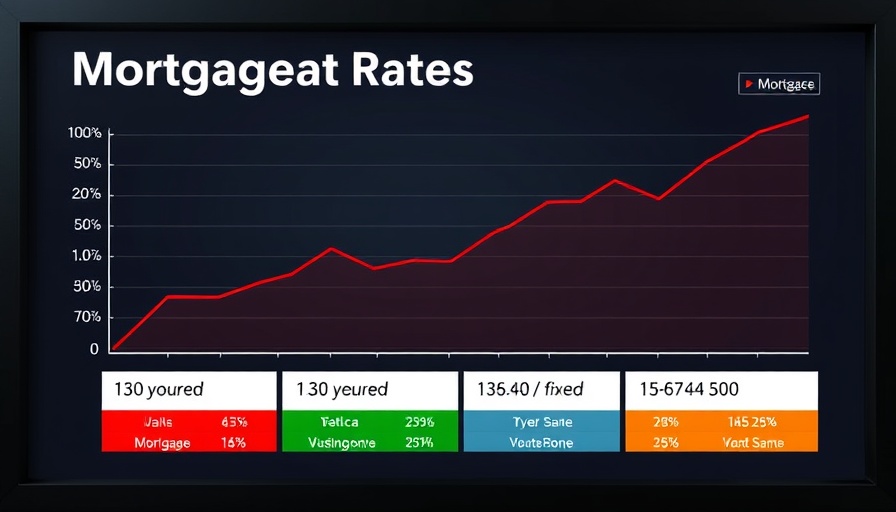
Understanding the Recent Shift in Mortgage Rates
After weeks of declining numbers, the mortgage rates have undergone a perceptible shift, seeing a rise of 0.06% for a standard 30-year fixed quote as of July 2, 2025. This adjustment marks the end of a positive trend that had persisted since May 21, during which rates had incrementally decreased, potentially setting a solid foundation for upcoming expectations regarding interest rates and broader economic implications.
The Impact of Employment Data on Economic Forecasts
Tomorrow’s anticipated jobs report represents a critical economic event that could significantly influence mortgage rates. With economists and traders closely monitoring the labor market indicators, today's increase may be a proactive measure in anticipation of volatility that could arise from the jobs data release. Past trends suggest that mortgage rates tend to fluctuate in response to such pivotal reports, with adjustments made based on data that reflects the health of the labor market.
Contextualizing Rates Amid Broader Economic Trends
Despite the recent increase, mortgage rates remain the lowest since early April. This sustained low point can largely be attributed to the Federal Reserve's previous actions and forecasts regarding interest rates. The Federal Reserve influences economic conditions through adjustments of the Fed Funds Rate, even though those specific changes do not directly dictate mortgage rates. Instead, such adjustments serve as signals to the market, often spurring reactions in mortgage lending practices and rates.
The Oscillation of Rates and Market Sentiment
Mortgage rates often experience cycles of stability followed by volatility, especially preceding significant economic reports. The concept of "circling the wagons" is frequently applicable here, as professionals in financial markets brace for potential fluctuations based on external economic factors. This cyclical behavior underscores the forecasted increase in rates, demonstrating how closely tied mortgage rates are to prevailing market sentiments and forecasts.
Preparing for Tomorrow's Jobs Report: What You Should Know
As you prepare for tomorrow's jobs report release, it’s vital to understand the broader implications of the anticipated data. Market perceptions will likely shift based on the outcome of this significant report, with forecasters noting how its results will influence concepts surrounding rate cuts. The labor market data can offer insights into not just employment levels but also consumer spending and overall economic health, which are pivotal in shaping mortgage rate trajectories.
Insights for Homebuyers and Investors
For potential homebuyers and investors, the fluctuation of mortgage rates holds critical significance. Understanding the relationship between the jobs report and mortgage rates can inform sound decision-making and strategic planning for purchasing or refinancing homes. Engaging with current data trends helps buyers navigate the market's unpredictability, potentially leading to more advantageous outcomes.
Staying Informed in a Dynamic Market
In today's economic climate, staying informed is tantamount to achieving financial wisdom. Subscribing to mortgage rate alerts and following economic news trends can prepare you to act decisively when rates shift. As always, adopting a proactive approach can make a considerable difference in realizing optimal financial opportunities, whether purchasing a new property or refinancing an existing loan.
Concluding Thoughts: What Lies Ahead?
As we look to tomorrow and the awaited jobs report, remember that mortgage rates are under continual influence from broader economic forces. The interplay of labor data and Fed rates can pave the path for future fluctuations, thereby emphasizing the necessity for informed and timely decision-making in the real estate sector.
 Add Row
Add Row  Add
Add 




 Add Row
Add Row  Add
Add 








Write A Comment